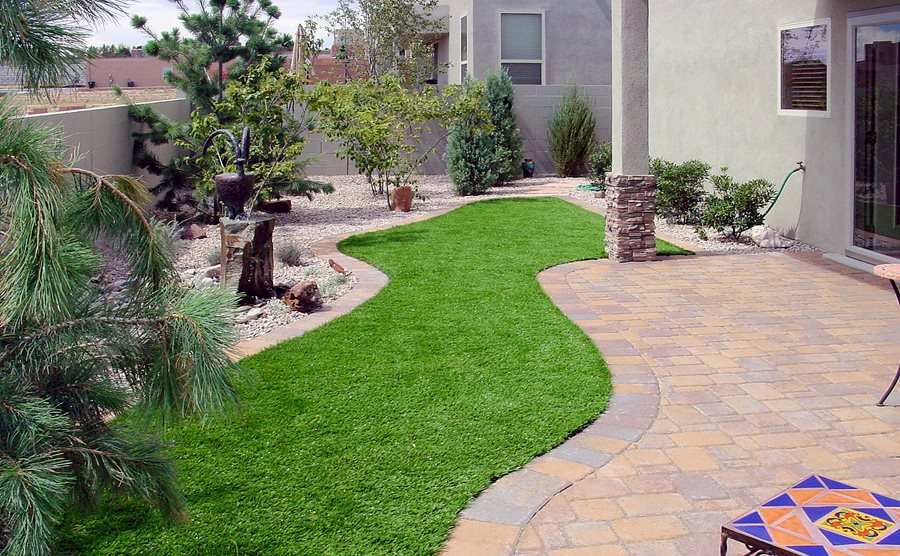Delve Into the Environmental Perks of Opting for Synthetic Grass Solutions
The adoption of artificial grass options provides an engaging chance to attend to pushing environmental difficulties. By substantially decreasing water usage and reducing the application of harmful chemicals, these choices not only promote sustainable landscaping yet additionally secure local ecosystems.
Water Conservation Perks
Among the most significant benefits of synthetic lawn is its capacity to preserve water. Conventional lawn yards need significant irrigation, especially in locations susceptible to dry spell or water limitations. On the other hand, synthetic grass does not require watering, significantly reducing the total need for water resources. This function is particularly valuable in deserts where water scarcity is a pressing problem.
By eliminating the demand for routine watering, synthetic turf contributes to lasting landscape techniques and helps mitigate the ecological influence of extreme water intake. The conservation of water extends to the decrease of runoff, which can lead to dirt erosion and waterway pollution.
Additionally, the installment of synthetic grass enables homeowners and districts to allocate water sources a lot more efficiently, concentrating on essential usages such as alcohol consumption water and agriculture. The change towards synthetic grass not just advertises accountable water usage but additionally straightens with wider ecological goals targeted at maintaining natural deposits.
As neighborhoods progressively focus on sustainability, the water conservation benefits of synthetic grass provide a compelling instance for its fostering in industrial and residential landscaping projects.
Decreased Chemical Usage
The shift to fabricated turf considerably reduces the reliance on chemical treatments generally used in natural yard maintenance. Standard grass monitoring commonly entails the application of herbicides, chemicals, and plant foods to advertise growth and control bugs. These chemicals can present threats to human wellness, neighborhood wildlife, and the environment, adding to dirt and water contamination.
In comparison, man-made lawn removes the demand for these hazardous substances. By decreasing the release of artificial substances into the ecological community, man-made lawn advertises healthier dirt and water systems.
Moreover, the absence of chemical drainage connected with man-made turf setups aids shield local rivers from contamination, supporting aquatic life and maintaining biodiversity. Turf installation phoenix az. As neighborhoods increasingly prioritize sustainable techniques, choosing artificial turf offers a sensible solution that aligns with environmental conservation goals. Via this change, homeowner can appreciate lush eco-friendly areas without endangering environmental health, leading the way for a much more lasting future
Lower Carbon Footprint

In addition, the installment of synthetic grass can lead to considerable water conservation. All-natural grass require significant quantities of water for irrigation, which not just includes in the carbon impact connected with water removal and therapy however additionally pressures neighborhood water resources. On the other hand, synthetic grass requires marginal upkeep, requiring no watering, thus considerably lowering water use and its linked energy expenses.
In addition, the view website long life of synthetic grass adds to its decreased carbon impact. With a life expectancy of up to 15 years or more, the need for frequent replacements is reduced, leading to much less waste and lower energy consumption in production and throwing away conventional turf options. On the whole, artificial grass presents a sustainable option for environmentally mindful landscaping.
Environment Preservation
Habitat preservation is a critical consideration in the discussion over landscape design choices, specifically when contrasting synthetic grass to natural grass. All-natural lawn yards usually require extensive maintenance, consisting of making use of fertilizers, chemicals, and herbicides, which can detrimentally influence local communities. These chemicals can seep right into the soil and waterways, damaging native plants and animals and disrupting local habitats.
Man-made grass removes the demand for hazardous chemicals, therefore safeguarding nearby wild animals and maintaining the honesty of bordering ecological communities. The setup of synthetic grass can lead to the conversion of former lawn locations right into even more biodiverse landscapes, such as pollinator yards or native plant areas, which visit our website can sustain local wildlife.
Inevitably, the change to man-made turf not only conserves water and reduces maintenance initiatives yet additionally fosters a much more unified partnership in between human tasks and the natural surroundings, promoting environment preservation in the procedure.
Long-Term Sustainability
Lasting sustainability is a crucial aspect in reviewing the advantages of synthetic grass over traditional grass lawns. One of the most significant benefits of synthetic grass is its sturdiness; it can last approximately 15-20 years with marginal upkeep, whereas natural lawn requires frequent reseeding and replacement. This durability reduces the demand for consistent resources, such as water, plant foods, and pesticides, which are crucial for maintaining a healthy grass yard.
Additionally, man-made lawn contributes to a reduction in carbon discharges related to grass care from this source equipment. Traditional lawns usually call for gas-powered mowers, leaners, and blowers, all of which add to air pollution. Phoenix turf companies. In comparison, synthetic grass eliminates the requirement for such devices, advertising a cleaner environment
Furthermore, the production of synthetic lawn significantly utilizes recycled materials, boosting its sustainability profile. As makers take on environment-friendly techniques, the environmental footprint of synthetic grass remains to lessen.

Conclusion
The adoption of man-made grass services provides substantial ecological benefits, including substantial water conservation, minimized dependence on hazardous chemicals, and a reduced carbon impact. Artificial lawn aids in protecting all-natural environments by decreasing land disruption and advertising long-term sustainability with the use of sturdy materials. Jointly, these factors emphasize the possibility of synthetic grass to add positively to ecological health and provide a practical alternative to conventional landscaping techniques in a progressively resource-conscious world.
In contrast, man-made lawn does not require watering, substantially minimizing the total demand for water resources. By decreasing the launch of artificial compounds into the environment, synthetic grass advertises healthier soil and water systems.
Furthermore, the setup of fabricated turf can result in considerable water preservation. In comparison, man-made turf needs marginal maintenance, requiring no watering, thus considerably lowering water use and its connected energy prices.
